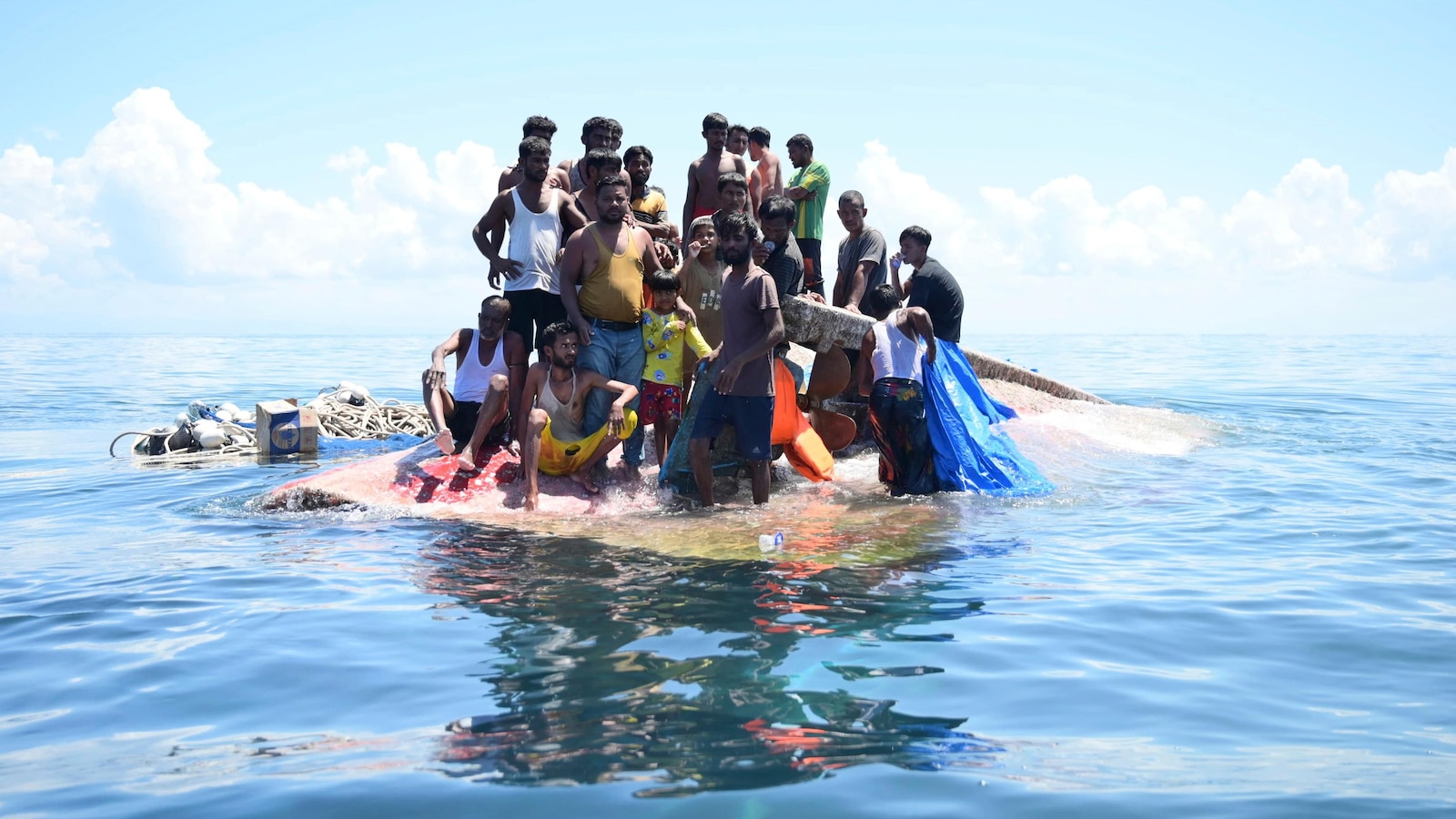MEULABOH, Indonesia — An Indonesian search and rescue ship on Thursday located a capsized wooden boat that had been carrying dozens of Rohingya Muslim refugees, and began pulling survivors who had been standing on its hull to safety.
An AP photographer aboard the rescue ship said 10 people had been taken aboard local fishing boats and another 59 were being saved by the Indonesian craft.
Men, women and children, weak and soaked from the night’s rain, wept as the rescue operation got underway and people were taken aboard a rubber dinghy to the rescue boat.
It was unclear how many refugees were aboard the small craft when it capsized off of Indonesia’s northernmost coast on Wednesday, with six survivors initially rescued by local fishermen estimating between 60 and 100 people.
It was unclear whether all managed to cling to the capsized craft overnight or whether some had drowned.
Indonesia’s search and rescue team only left Banda Aceh city in the evening Wednesday, many hours after the capsizing, and initially had difficulty locating the boat in the choppy waters off the coast.
It finally found the boat and the survivors about midday on Thursday.
Amiruddin, a tribal fishing community leader in Aceh Barat district, said those rescued indicated that the boat was sailing east when it started leaking and then strong currents pushed it toward the west of Aceh. The six said others were still trying to survive on the capsized craft.
About 740,000 Rohingya were resettled in Bangladesh to escape the brutal counterinsurgency campaign by security forces in their homeland of Myanmar.
Thousands have been trying to flee overcrowded camps in Bangladesh to neighboring countries with Indonesia seeing a spike in refugee numbers since November which prompted it to call on the international community for help. Rohingya arriving in Aceh face some hostility from some fellow Muslims.
Indonesia, like Thailand and Malaysia, is not a signatory to the United Nations’ 1951 Refugee Convention outlining their legal protections, and so is not obligated to accept them. However, they have so far provided temporary shelter to refugees in distress.
Last year, nearly 4,500 Rohingya — two-thirds of them women and children — fled their homeland of Myanmar and the refugee camps in neighboring Bangladesh by boat, the United Nations refugee agency reported. Of those, 569 died or went missing while crossing the Bay of Bengal and Andaman Sea, the highest death toll since 2014.
Returning safely to Myanmar is virtually impossible because the military that attacked them overthrew Myanmar’s democratically elected government in 2021. No country has offered them any large-scale resettlement opportunities.
___
Tarigan reported from Jakarta. AP journalist David Rising contributed to this story from Bangkok.

